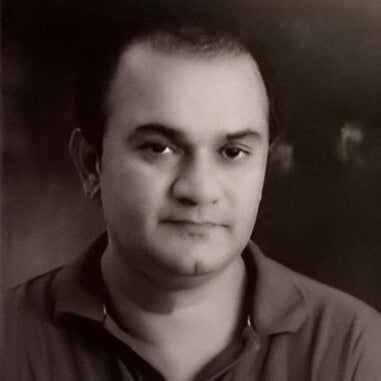
GN Qazi
Ghulam Nabi Qazi, known professionally as G. N. Qazi, is a distinguished Pakistani artist born in 1975. He earned a diploma in Fine Arts from the Karachi School of Arts in 1995 and has since become a prominent name in the contemporary art scene. His body of work is deeply rooted in the cultural and architectural heritage of Sindh, particularly the historic cityscapes of Thatta, his hometown.
Qazi’s unique style is defined by his profound ability to capture the essence of old architecture. His paintings frequently portray the fading beauty of Sindh’s historic towns, including Thatta, Hyderabad, Sukkur, and Karachi. Yellowed alleyways, weathered havelis with crumbling wooden balconies, and vibrant bazaars brimming with life are common themes. Through these subjects, he conjures a sense of nostalgia and serenity, striving to preserve the tangible remnants of a vanishing heritage.
Working primarily in mixed media, Qazi skillfully blends various techniques to create textured, layered compositions. His work often combines thick impasto strokes with delicate washes and drips of color, achieving a balance between realism and surrealism. His command over color, pattern, and design enhances the emotional depth and visual richness of his paintings.
Qazi's art has been showcased in numerous solo and group exhibitions, with many of his solo shows held in Karachi. His work has also received international attention, being exhibited in galleries around the world. Art critics have described him as a “collector’s painter,” owing to the strong demand for his work among collectors and art dealers.
In addition to his architectural scenes, Qazi also explores figurative painting. He typically places solitary human figures within his architectural compositions, evoking themes of solitude, introspection, and spiritual awakening. His contemporary figurative pieces are notable for their emotional depth and imaginative use of light, further distinguishing his work among his peers.
G. N. Qazi’s paintings reflect a deep connection to his roots and a commitment to documenting and preserving cultural identity. With each brushstroke, he not only celebrates the past but also invites the viewer to reflect on the beauty and fragility of heritage.
